What Is Classification of Bricks?
Important Point
Many types of brick available in the market. All bricks are a different purpose and different place used, so us classification bricks as below.
Classification of Bricks
- Based on Shape
- Based on Quality
- Based on Their Using
- Based on Raw Materials
- Based on Building Process
- Based on Manufacturing Method
- Bricks Based on Weather-resisting Capability
#1. Classification of Bricks:Based on Shape
- Squint Brick.
- Splay Brick.
- Coping Bricks.
- Bull-Nose Bricks.
- Cownose Brick.
- Perforated Bricks.
- Hollow Bricks.
1. Squint Brick:
They are cut at a corner at an angle of more than 90 degrees. They are required to shape the outer or inner corner in a wall.
2. Splay Brick:
They have a level or part, width-wise, length, or in both directions. The individual shapes are grouped under gleaming bricks, which are also made for use indoors and windows, vents, and plinths.
3. Coping Bricks:
They are used for coping on the walls to give them a good appearance and can also be used for easy drainage of water.
When a coping is to be provided to a wall, a particular shape may be desired. Chuffed, half-round, and saddleback bricks are some common imitating bricks.
4. Bull-Nose Bricks:
These bricks have rounded corners and are usually preferred in buildings from an architectural point of view. They are mostly used in the construction of steps, sills, and capping walls. It is a standard brick with one edge rounded.
5. Cownose Brick:
It is similar to the bullnose, but it has both sides rounded to one side. It can also be called double bullnose bricks. They have the same use as bullnose, but they only give additional roundness.
6. Perforated Bricks:
These bricks have hollow holes, produced by pushing iron bars within the bricks. The purpose of producing these holes is to reduce the overall weight of the brick, thus minimizing the self-weight of the structure.
However, these bricks do transmit sound and are also not suitable to be used in the hydraulic structures.
7. Hollow Bricks:
These bricks are used for insulation purposes. They are strong against distributed loads; however, they may easily fail against concentrated loads.
They are different from perforated brick as a number of holes in the hollow brick are less, but the size of holes is bigger as compared to those in perforated bricks.
Also, read: What Is Pier Foundation | Types of Drilled Piers | Advantages and Disadvantages of Drilled Pier Foundations
#2. Classification of Bricks: Based on Quality
- First Class Bricks.
- Second Class Bricks.
- Third Class Bricks.
- Fourth Class Bricks.
1. First Class Bricks:
These are the high-quality bricks, having a uniform shape. Color and texture. They have sharp edges. They are sound and well burnt.
If scratched with a nail, they leave no mark. Moreover, if struck against each other, a clear metallic sound is produced.
They are free from efflorescence, cracks, and other flaws. The crushing strength of these bricks is approximately 105 kg/cm2.
The water absorption after 24 hours in the water is no more than 10- 15 percent by mass of the brick. Owing to the highest quality, they are used in load-bearing walls and pavements.
2. Second Class Bricks:
Although sound and well burnt, the second class bricks have certain irregularities in shape and texture. Like first class bricks, they are also free from cracks, considerable efflorescence, and flaws.
The water absorption after 24 hours in the water is about 20 percent by mass of the brick. They are also used in load-bearing walls but of moderate capacity, usually in single-story buildings.
However, they are widely used in partition walls. Moreover, they are preferred as brick ballast in foundations and floorings.
3. Third Class Bricks:
Slightly under burnt bricks are termed as third-class They are not uniform in shape and size. Their crushing strength is about 30 kg/cm2far below than that of first-class bricks.
The water absorption is about 25 percent by mass of the brick after 24 hours of submersion in water. They produce a dull sound when struck against each other.
Though they have poor strength and texture, yet they are highly economical and can be used in the construction of temporary and rural structures.
4. Fourth Class Bricks:
They are slightly over burnt thus have very low strength and are not recommended for application in major construction works. However. They can be used in flooring, and inferior construction works.
Also, read: What Is Plaster | Type of Plaster | Defects In Plastering
#3. Classification of Bricks: Based on Their Using
- Common Bricks.
- Engineering Bricks.
1. Common Bricks:
These bricks are the most common bricks used. They don’t have any special features or requirements. They have low resistance, low quality, low compressive strength. They are usually used on the interior walls.
2. Engineering Bricks:
Engineering bricks are bricks manufactured at extremely high temperatures, forming a dense and strong brick, allowing the brick to limit strength and water absorption.
Engineering bricks offer excellent load bearing capacity damp-proof characteristics and chemical resisting properties.
#4. Classification of Bricks: Based on Raw Materials
- Common Burnt Clay Bricks.
- Sand Lime Bricks.
- Fly Ash Clay Bricks.
- Concrete Bricks.
- Firebrick.
1. Common Burnt Clay Bricks :
Common burnt clay bricks are formed by pressing in molds. Then these bricks are dried and fired in a kiln. Common burnt clay bricks are used in general work with no special attractive appearances.
When these bricks are used in walls, they require plastering or rendering.
2. Sand Lime Bricks :
Sand-lime bricks are made by mixing sand, fly ash and lime followed by a chemical process during wet mixing. The mix is then molded under pressure forming the brick.
These bricks can offer advantages over clay bricks such as their color appearance is grey instead of the regular reddish color.
Their shape is uniform and presents a smoother finish that doesn’t require plastering. These bricks offer excellent strength as a load-bearing member.
3. Fly Ash Clay Bricks:
Fly ash clay bricks are manufactured with clay and fly ash, at about 1,000 degrees C. Some studies have shown that these bricks tend to fail poor produce pop-outs, when bricks come into contact with moisture and water, causing the bricks to expand.
4. Concrete Bricks:
It is made of concrete. It is the least used bricks. It has low compression strength and is of low quality. These bricks are used above and below the damp proof course.
These bricks are used can be used for facades, fences, and internal brick-works because of their sound reductions and heat resistance qualities. It is also called mortar brick.
It can be of different colors if the pigment is added during manufacturing. It should not be used below ground.
5. Firebrick:
It is also known as refractory bricks. It is manufactured from a specially designed earth. After burning, it can withstand very high temperatures without affecting its shape, size, and strength.
It is used for the lining of chimney and furnaces where the usual temperature is expected to be very high.
Also, read: Introduction of Gantry Girder | Load on Gantry Gutter | Type of Load on Gantry Gutter
#5. Classification of Bricks: Based on Building Process
- Unburnt Bricks.
- Burnt Bricks.
1. Unburnt Bricks:
Unburn or sun-dried with the help of heat received from the sun after the process of molding. These bricks can only be used in the construction of temporary and cheap structures.
Such bricks should not be used in places exposed to heavy rains.
2. Burnt Bricks:
Burnt bricks are made by burning them in the kiln. First-class, Second Class, Third Class bricks are burnt bricks.
#6. Classification of Bricks: Based on Manufacturing Method
- Ground-Moulded Bricks.
- Table-Moulded Bricks.
- Machine-Moulded Bricks
1. Ground-Molded Bricks :
the ground is first made level and fine sand is sprinkled over it. Mould is dipped in water and placed over the ground to fill the clay.
Extra clay is removed by wooden or metal strike after the mold is filled forced mold is then lifted up and raw brick is left on the ground.
Mould is then dipped in water every time lower faces of ground molded bricks are rough and it is not possible to place the frog on such bricks.
Ground molded bricks of better quality and with frogs on their surface are made by using a pair of pallet boards and a wooden block.
2. Table-Molded Bricks:
Molding is done on a table of size lm x 2m with the help of hands, molds and various tools.
3. Machine-Moulded Bricks:
The molding of bricks is carried out with the help of a machine. This method results in better shape and a high production rate.
This approach is used when a larger number of bricks are required in a very limited time span.
Also, read: Difference Between Bitumen and Tar | What Is Bitumen | What Is Tar
#7. Classification of Bricks: Based on Weather-Resisting Capability
- No Weather Grade.
- Moderate Weather Grade.
- Severe Weather Grade.
1. No Weather Grade:
These bricks do not have any weather resisting capabilities and used on the inside walls.
2. Moderate Weather Grade:
These types of bricks are used in tropical countries. They can withstand any high temperature.
3. Severe Weather Grade:
These types of bricks are used in the countries which are covered in snow most of the time of year. These bricks are resistant to any kind of freeze-thaw actions.
Classification of Brick
On Field Practice: Clay bricks are classified as first class, second class, third class and fourth class based on their physical and mechanical properties. Clay bricks are classified as first class, second class, third class and fourth class based on their physical and mechanical properties.
Classification of Bricks As per Based
- Based on Shape.
- Squint Brick.
- Splay Brick.
- Coping Bricks.
- Bull-Nose Bricks.
- Cownose Brick.
- Perforated Bricks.
- Hollow Bricks.
- Based on Quality.
- First Class Bricks.
- Second Class Bricks.
- Third Class Bricks.
- Fourth Class Bricks.
- Based on Their Using.
- Common Bricks.
- Engineering Bricks.
- Based on Raw Materials.
- Common Burnt Clay Bricks.
- Sand Lime Bricks.
- Fly Ash Clay Bricks.
- Concrete Bricks.
- Firebrick.
- Based on Building Process.
- Unburnt Bricks.
- Burnt Bricks.
- Based on Manufacturing Method.
- Ground-Moulded Bricks.
- Table-Moulded Bricks.
- Machine-Moulded Bricks
- Bricks Based on Weather-resisting Capability.
What Are the Classification of Bricks?
On Field Practice: Clay bricks are classified as first class, second class, third class and fourth class based on their physical and mechanical properties. Clay bricks are classified as first class, second class, third class and fourth class based on their physical and mechanical properties. 1.
Is Classification of Bricks?
Bricks can be classified based on their composition, manufacturing method, physical properties, and intended use. Common classifications include clay bricks, concrete bricks, sand-lime bricks, and fly ash bricks based on composition. Manufacturing method categories include extruded bricks, dry-pressed bricks, and kiln-fired bricks. Physical properties such as compressive strength, water absorption, and density can also be used for classification. Lastly, bricks can be categorized based on their intended use, such as facing bricks, common bricks, fire bricks, and acid-resistant bricks.
Explain Classification of Bricks
Bricks are classified based on composition (e.g., clay, concrete), manufacturing method (e.g., extruded, kiln-fired), physical properties (e.g., compressive strength, water absorption), and intended use (e.g., facing bricks, fire bricks).
How Are Bricks Classified?
Bricks are classified based on composition, manufacturing method, physical properties, and intended use.
Is 3102 Classification of Bricks?
3102-1971 Classification of burnt clay solid bricks (second revision).
Types of Bricks in Civil Engineering
- Sun-dried bricks. Also known as unburnt bricks, these types of bricks are mostly used for decorative purposes because they are the weakest.
- Burnt bricks. These bricks are divided into four categories:
- Concrete bricks.
- Lime bricks.
- Engineering bricks.
- Fly ash bricks.
Brick Classification as Per Is Code
As per the IS code (IS 1077:1992), bricks are classified based on their compressive strength, dimensions, and water absorption into different classes and categories.
Types of Bricks
Some common types of bricks used in construction include clay bricks, concrete bricks, sand-lime bricks, fly ash bricks, fire bricks, engineering bricks, hollow bricks, perforated bricks, bullnose bricks, and clinker bricks.
What Is Bricks in Civil Engineering?
In civil engineering, bricks are rectangular building blocks used for construction purposes, providing strength, durability, and insulation to structures.
How Many Classes of Bricks Are There?
There are four classes of bricks based on compressive strength: Class 35, Class 30, Class 25, and Class 20.
Difference Between First Class Second Class and Third Class Bricks
The qualities of these bricks are little less as compared to first class bricks. These are slightly over burned. The sizes and shapes are quite different as first class bricks. The edges and corner of these bricks are slightly broken.
Characteristics of First Class Bricks
First Class Brick
These bricks are moulded into table-moulding and burnt in large kilns. As the result these bricks have standard shapes, sharp edges and have smooth surface. These bricks are more durable and have more strength. The first class bricks are used for permanent structures.
Different Types of Brick
Types of bricks
- Sun-dried bricks. These are un-burnt bricks made of clay.
Burnt clay bricks. Burnt clay bricks are made of clay and put into the kiln for burning. - Fly ash bricks.
- Concrete bricks.
- Engineering bricks.
- Calcium silicate bricks.
- Eco bricks.
- First class bricks.
First Class Bricks Compressive Strength
105 kg/cm²
First-class brick has a compressive strength of 105 kg/cm². The compressive strength of a second-rate brick is 70 kg/cm². The compressive strength of sun-dried brick is between 15 and 25 kg/cm².
Suggested Read –
- Hollow Bricks
- Stone Vs Brick
- Brick Protection
- How to Draw House Plan Step By Step | Standard Room Sizes
- Difference Between One Way Slab and Two Way Slab | What is Slab
- Difference Between Bitumen and Tar | What Is Bitumen | What Is Tar
- Introduction of USCS | USCS Classifies Soils into Two Broad Categories
- Introduction of Gantry Girder | Load on Gantry Gutter | Type of Load on Gantry Gutter
- What Is Unit Weight | What Is Density | What Is Unit Weight Material | Unit Weight Building Materials
- What Is Structural Settlement | Causes For Structural Settlement | What Is Soil Settlement Foundation Structural Settlement
Originally posted 2023-07-12 12:30:47.
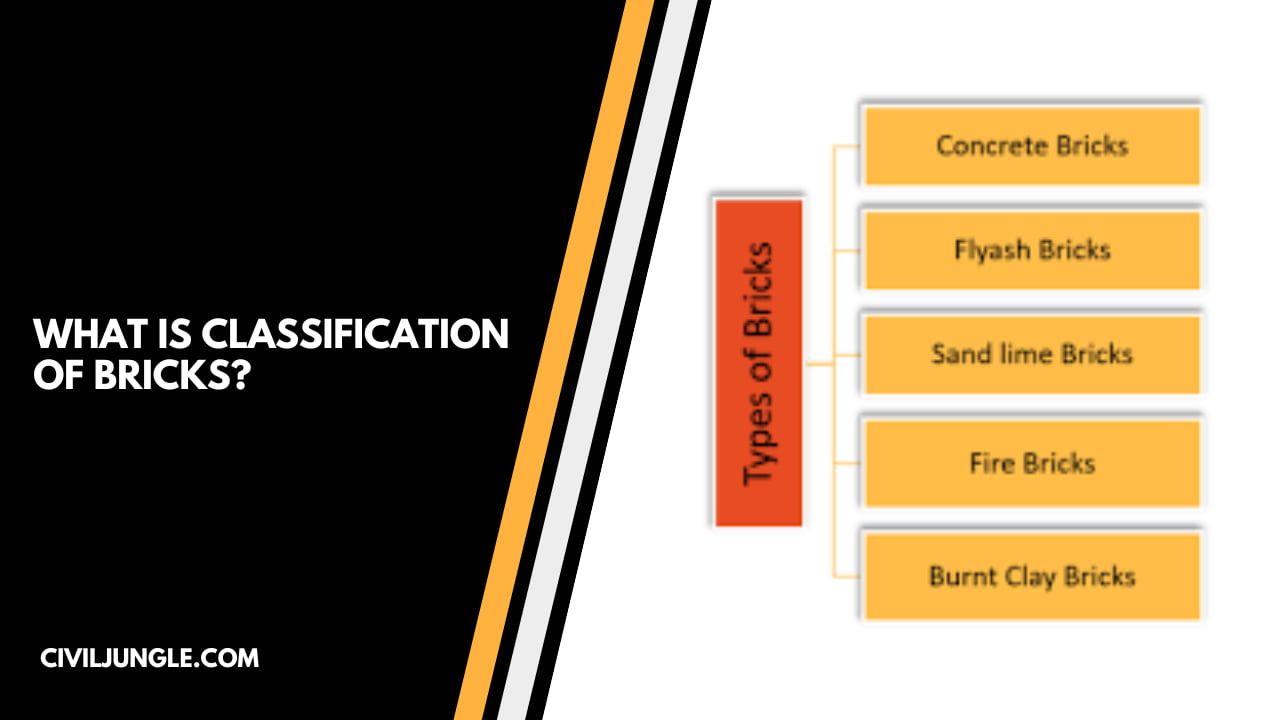

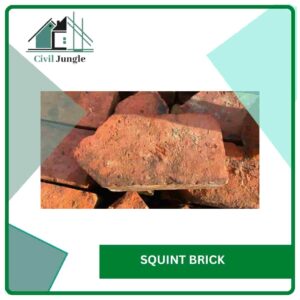
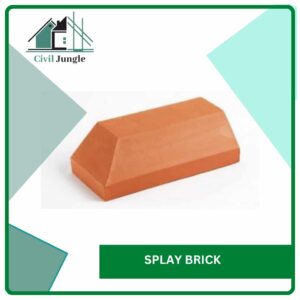
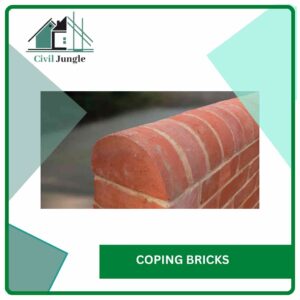
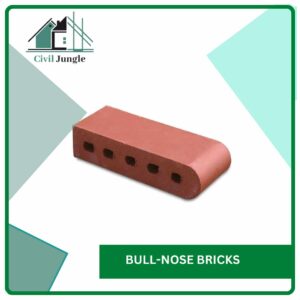
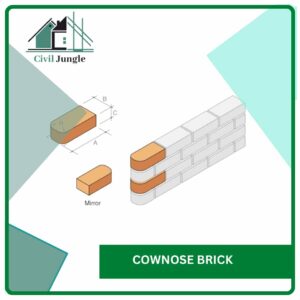
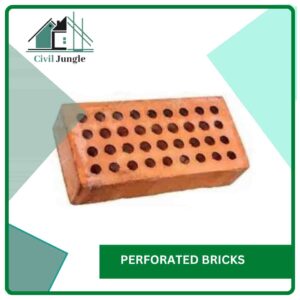
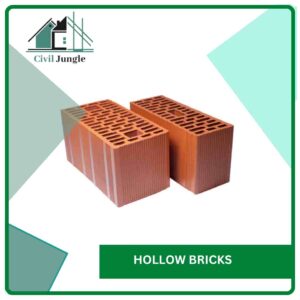
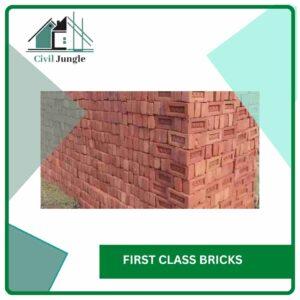
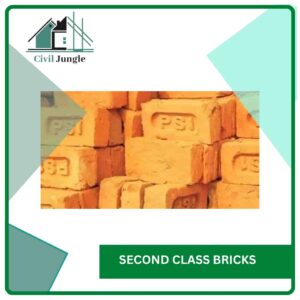

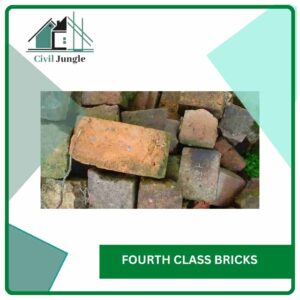
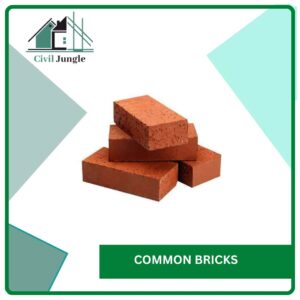
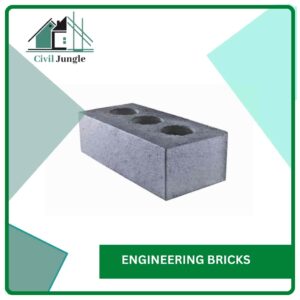
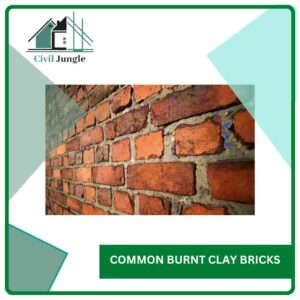

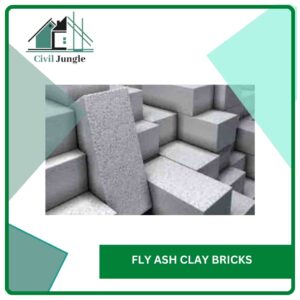
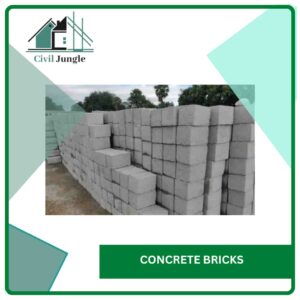

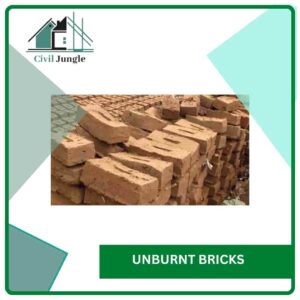
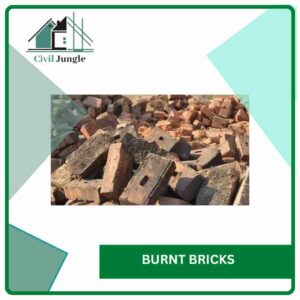
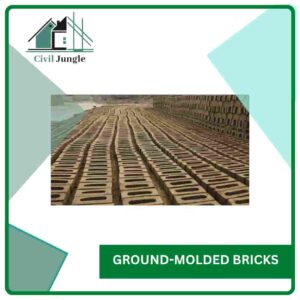
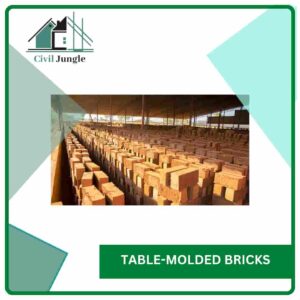
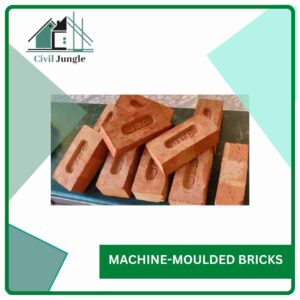

Leave a Reply